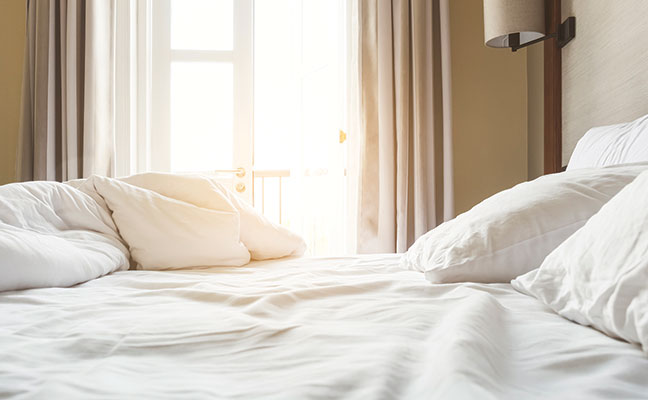How Pests Affect Hotel Star Ratings and Customer Satisfaction
Share
In the competitive world of hospitality, maintaining a pristine reputation is crucial. For hotels, their star ratings serve as a universal symbol of quality and service excellence. However, one often overlooked factor that can significantly impact these ratings is the presence of pests. Understanding how pests affect hotel star ratings is vital for hotel managers and owners who aim to maintain or improve their establishment's standing in the industry.

The Impact of Pests on Hotel Star Ratings
Hotel star ratings are not just a reflection of luxury and comfort; they also indicate how well a hotel maintains its premises. The presence of pests can directly impact these ratings, leading to negative reviews and a tarnished reputation. Guests expect a clean and safe environment, free from the nuisances of rodents, insects, and other pests. When this expectation is not met, it can result in poor reviews, social media backlash, and ultimately, a decrease in star ratings.
In the digital age, where online reviews hold significant power, even a single pest sighting can go viral, damaging a hotel's reputation overnight. Guests often take to platforms like TripAdvisor or Google Reviews to express their dissatisfaction, and these reviews can influence the decision-making process of potential guests. As such, understanding how pests affect hotel star ratings and addressing these issues proactively is essential for maintaining a positive public image.
Common Pests in Hotels
Hotels can attract a variety of pests due to the constant influx of guests and food services. Some common pests that plague hotels include:
- Bed Bugs: These pests are notorious for causing discomfort and irritation to guests. Their presence is often associated with uncleanliness, which can lead to negative perceptions of the hotel's hygiene standards.
- Cockroaches: Known for thriving in unsanitary conditions, cockroaches can be a major turn-off for guests. Their presence can indicate poor maintenance and lack of effective pest control measures.
- Rodents: Rats and mice are not only unsightly but can also pose health risks to guests and staff. They can contaminate food supplies and damage property, leading to costly repairs.
- Ants and Flies: These pests are often attracted to food and can be commonly found in hotel kitchens and dining areas. Their presence can compromise food safety and hygiene standards.
To learn more about how hotels monitor pests, you can visit this resource.
Preventive Measures and Solutions
To mitigate the impact of pests on hotel star ratings, implementing effective pest control measures is essential. Here are some strategies hotels can adopt:
Regular Inspections
Conducting regular inspections of the hotel premises can help identify potential pest problems before they escalate. This proactive approach allows hotel management to address issues promptly and prevent infestations.
Integrated Pest Management (IPM)
Adopting an Integrated Pest Management approach involves a combination of prevention, monitoring, and control strategies. By using environmentally friendly methods and minimizing pesticide use, hotels can effectively manage pest populations while reducing the risk of exposure to guests and staff. For more on pest control in hotels, check out this guide.
Guest Education
Educating guests about the importance of maintaining cleanliness and reporting any pest sightings can help in early detection and control. Encouraging guests to report issues promptly enables hotel staff to take immediate action and prevent further spread.
The Role of Technology in Pest Management
In recent years, technology has played a significant role in revolutionizing pest management in hotels. From electronic monitoring systems to smart traps, these innovations offer efficient solutions for detecting and controlling pest activity. Using technology not only enhances the effectiveness of pest control efforts but also provides guests with added assurance of the hotel's commitment to maintaining a pest-free environment.
For an insight into how wireless gateways assist in pest monitoring, you can read more here.
Conclusion
In conclusion, understanding how pests affect hotel star ratings is crucial for maintaining a hotel's reputation and ensuring guest satisfaction. By implementing effective pest control measures, regularly monitoring and inspecting premises, and leveraging technology, hotels can protect their star ratings and provide a safe and enjoyable experience for guests. For more detailed strategies on improving pest monitoring in hotels, you can explore this article.

FAQs
How do pests affect customer satisfaction in hotels?
Pests can lead to negative reviews and decreased customer satisfaction as guests may perceive the hotel as unclean and unsafe. This can impact the hotel's reputation and star ratings.
What are some common pests found in hotels?
Common pests in hotels include bed bugs, cockroaches, rodents, ants, and flies, all of which can negatively affect a hotel's hygiene standards and guest experience.
How can hotels prevent pest infestations?
Hotels can prevent pest infestations by conducting regular inspections, adopting Integrated Pest Management practices, educating guests, and utilizing technology for early detection and control.
